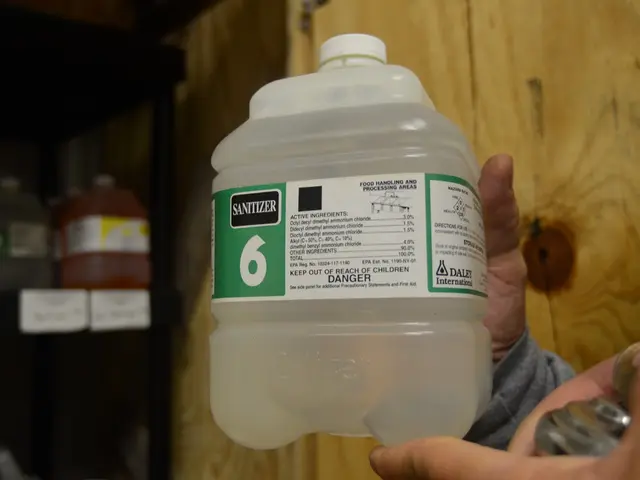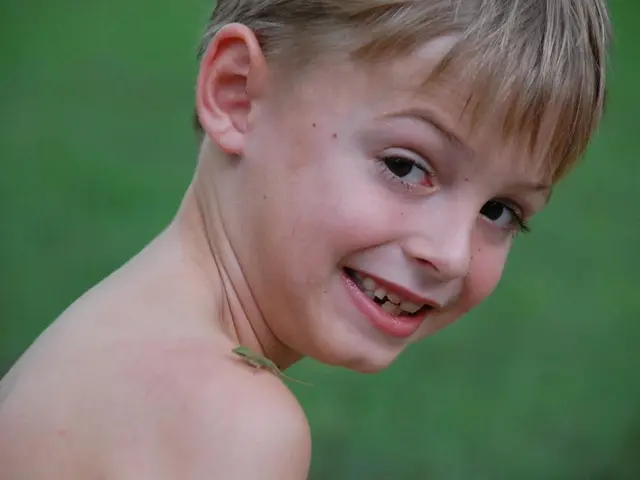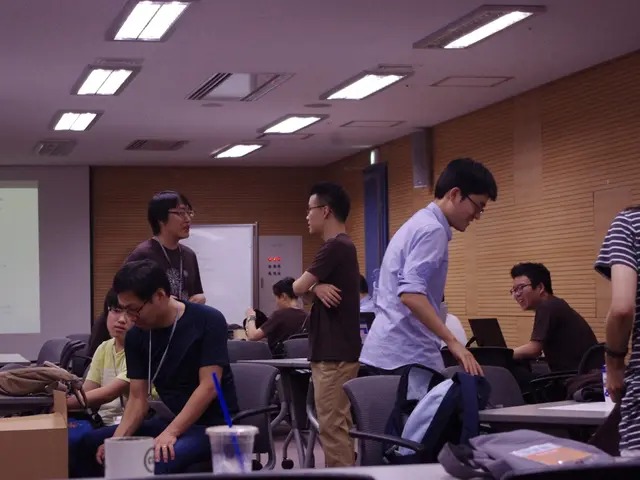Geneticlink and familial factor behind bipolar disorder, elevating risk in kinship circles
Bipolar disorder (BD), a mental health condition characterised by extreme mood swings, is a complex disorder with a multifactorial etiology. Current research emphasises the intricate interplay between genetic and environmental factors in its development.
Genetic factors play a significant role in the development of BD. The disorder has a strong hereditary component, with heritability estimates ranging from 44% to 90%, according to family and twin studies. Identical twins show a concordance rate of about 40-70%, whereas first-degree relatives have a 5-10% risk, compared to 0.5-1.5% in the general population.
Genome-wide association studies have identified 64 independent genetic loci associated with BD, each contributing a small effect. These include genes involved in ion channels, neurotransmitter signalling, and synaptic pathways. Genetic correlations indicate a shared genetic architecture between BD and schizophrenia, suggesting overlapping biological mechanisms.
Beyond inherited genes, epigenetics, or changes in gene expression without altering DNA sequence, also plays a significant role in modulating risk. Genetic variants affect how environmental exposures influence the disorder, accounting for individual differences in susceptibility.
Environmental exposures can influence the onset and course of BD. Prenatal factors such as maternal smoking and intrauterine infections, childhood trauma, viral infections in adulthood, significant life stressors, substance abuse and illicit drug use, medications, and traumatic head injuries may all contribute to the development of BD.
The pathogenesis of BD involves oxidative stress, mitochondrial dysfunction, calcium signalling abnormalities, and inflammatory processes. Dysregulation in neuroplasticity, neurotransmission, myelination, and hypothalamic-pituitary-adrenal (HPA) axis function, as well as circadian rhythm disruptions, are also implicated.
In summary, BD arises from a multifactorial etiology where inherited genetic factors set a strong predisposition, but environmental exposures and life experiences shape the risk and clinical expression of the disorder. Genetic sensitivity influences how individuals respond to environmental triggers, meaning the same stressor may have different effects depending on one's genetic makeup.
This integrated model highlights the need for personalised approaches in understanding and managing BD, accounting for both genetic background and environmental context. It is important to remember that having a close relative with BD increases a person's risk of developing the condition, but it does not mean that someone will definitely develop it. Stressful events, substance abuse, and traumatic experiences may trigger symptoms, but the exact inheritance pattern of BD is unclear.
If you or a family member are showing symptoms of BD, it is essential to consult a doctor for a proper diagnosis and treatment.
- Inherited genes, particularly those associated with ion channels, neurotransmitter signalling, and synaptic pathways, contribute significantly to the development of bipolar disorder, as identified by recent genome-wide association studies.
- Environmental factors such as prenatal infections, childhood trauma, viral infections in adulthood, significant life stressors, substance abuse, and traumatic head injuries may influence the onset and progression of bipolar disorder, although the exact inheritance pattern is still unclear.
- Beyond genetic factors, epigenetics plays a crucial role in modulating the risk of bipolar disorder by affecting how environmental exposures influence the disorder, with each individual's susceptibility being influenced by their unique genetic makeup.








